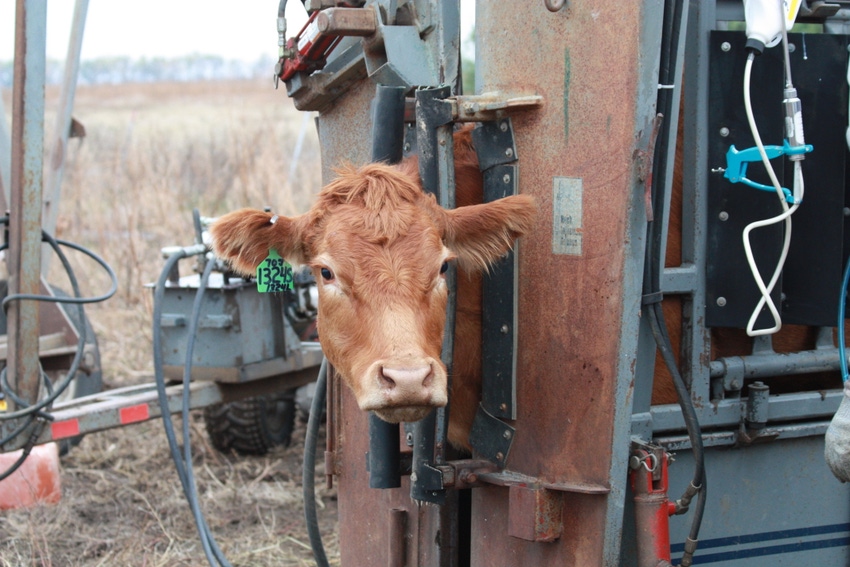The New York Times writes about antibiotic use in the livestock industry; here’s where they got it wrong and what the industry needs to do to change the rhetoric.
March 31, 2018

Antibiotic resistance is becoming an increasingly hot button topic, and the livestock industry is going to continue to be a huge part of the discussion moving forward.
As a whole, the industry has already made great strides in doing our part. With the introduction of the Veterinary Feed Directive (VFD), producers are working closely with veterinarians to determine best protocols for managing herd health. Additionally, many are turning toward prebiotic and probiotic products to optimize gut health and avoid the need for using antibiotics altogether.
While I believe the VFD is just the tip of the iceberg for what types of regulations are to come for livestock owners as it relates to antibiotics and animal health, I do have to say, for now, it’s a great story to tell. Consumers trust veterinarians, and the VFD demonstrates how much the industry cares about this topic and the changes we have made to address ongoing issues of antibiotic resistance.
READ: What has the VFD brought to the table?
However, this great story of livestock producers focusing on both animal and human health is falling on deaf ears. A recent article featured in the New York Times focuses on our reliance on antibiotics in the industry and compares feed grade antibiotics to addictive performance-enhancing drugs, JBS as the “rotten meat mafia,” feedlots as “harsh” places to live, and quotes from producers and veterinarians that show a flippant attitude about the issue instead of addressing the realities of antibiotic use in human and livestock health head on.
Written by investigative journalist Danny Hakim, the article is titled, “At hamburger central, antibiotics for cattle that aren’t sick,” and it disregards the benefits of the VFD, citing that rules do little to reduce antibiotic use for growth promotion rather than treating disease, since he claims the rules were designed in cooperation with “drug companies and industrial farm groups.”
Here is an excerpt: “A blunt-spoken former bull rider, Mike Callicrate raises cattle in Kansas and Colorado. To him, antibiotics are ‘performance enhancing drugs,’ and he lumps them in with other industrial additives like steroid hormones.
“’We’re all worried about athletes using performance enhancing drugs during the baseball game, but we’re not worried about the hot dogs that were produced using the same chemical compounds and that are being eaten by our children,’” he said during a recent visit to his farm on the Kansas-Colorado border.”
It’s apparent to me that Hakim was looking for a “gotcha moment” in interviewing these folks, and even his descriptions of the feedlots he toured were painted as these dark, ugly, hazy places that certainly didn’t portray a beautiful picture of beef production in the U.S.
READ: A beef producer's guide for use of antibiotics
It’s disappointing to say the least, but I do have to credit Hakim for recognizing that people are addicted to antibiotics.
For example, it’s not uncommon for doctors to prescribe antibiotics to the whole family if one child gets sick, and I recently read about an app that allows people to plug in their symptoms and get a prescription for antibiotics without ever seeing a physician.
When we don’t feel well and we take the time to go to the doctor, we as consumers often want instant results and medication to make the pain go away. Forget the fact that these medicines aren’t always necessary; people don’t want to pay a co-pay and sit in a waiting room without coming home with something for their trouble.
It’s human nature, and although physicians are becoming more aware of how antibiotics impact gut health and are trying to curtail the use of these drugs, people still live closely together and the result is influenza, strep throat, bronchitis and more gets passed around every winter, necessitating our need for antibiotics.
READ: Keeping antibiotic use alive in U.S.
So what’s the solution? Certainly the livestock industry has a role, but it’s not the entire piece, nor should we be the ones to blame. Personal responsibility is important here, and I believe eating well, using probiotics, getting quality sleep and reducing stress could promote healthy people, just like those same attributes are important to keeping cattle healthy.
We need industry voices to have these discussions, and when the media comes calling, we need strong, educated and practiced voices who can control the rhetoric to ensure a positive story goes to print.
The opinions of Amanda Radke are not necessarily those of beefmagazine.com or Farm Progress.
About the Author(s)
You May Also Like





